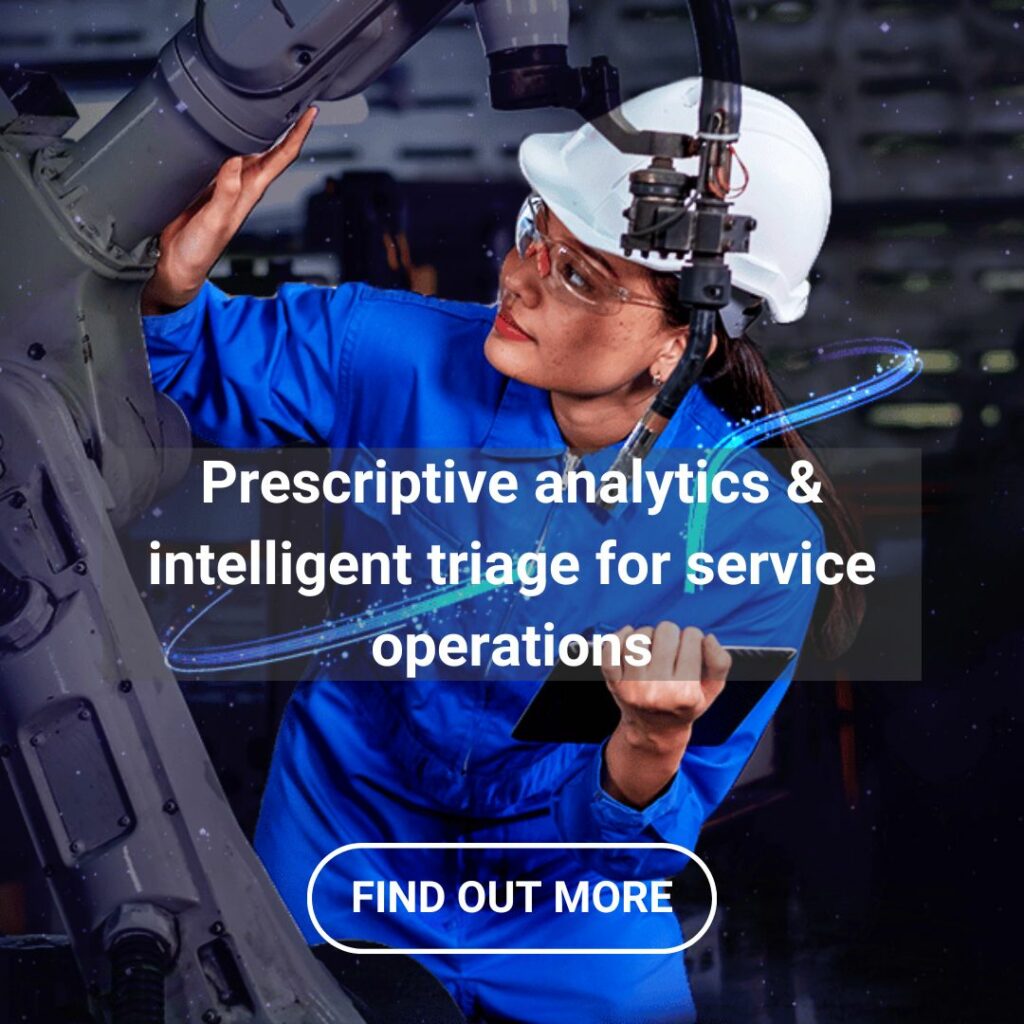In an age of Uberization, customer service expectations are higher than ever in our post-pandemic world.
The answer to meeting those expectations lies within the rich data sets we have on each customer. However, the flow of information often reaches us too late for intervention. Is Artificial Intelligence the solution that will help us spot service trends before the customer relationship goes sour? Kris Oldland talks to Aquant’s Sidney Lara to find out more about this critical area of modern service excellence…
At the end of 2020, Field Service News Research undertook a major research study that globally spoke to over 240 field service organisations.
The study’s findings reinforced what many of us already knew; our industry was going through radical change. The pandemic was the catalyst, but we had already begun a journey of transformation long ago. Yet, while the technology and even the delivery mechanisms for service may be rapidly evolving, the fundamentals of service delivery remain constant.
In that study, we saw how 70% of field service organizations stated that service excellence remained a key differentiator in winning and retaining business. However, the definition of what service excellence looks like in a post-pandemic world (a world that has embraced digital transformation with both hands in a bid to better meet customer demands) has undoubtedly changed.
In today’s Uberized world, the expectation of effortlessness in service interactions has reached entirely new peaks. Our customers expect us to have joined the dots before we speak to them. They have become accustomed to the companies they choose to work with, having a detailed and intimate knowledge of their interactions. Yet, for many field service organizations, they are driving while looking in the rear-view mirror. That is to say that today too many of us (because of lack of tools, not lack of will) fail to leverage the deep customer data we have until there is a problem.
The systems in place are often adequate, but is it adequate enough when the bar has been raised so high by bleeding-edge data-driven service providers? Is the information your service department receives often simply too little and too late? When that low NPS score comes back, the damage has been done, and it can take twice as much effort to rebuild a broken customer relationship than to maintain a healthy one.
The key question then for field service organizations operating in these dynamic and fast-developing times is how can they get ahead of customer issues before they happen? The answer is by understanding all of your service data.
It is a task easier said than done, but one that can be achieved by leveraging Artificial Intelligence tools that are designed to surface the critical data that brings such insight and knowledge to the fore.
To find out more about this critical area within our sector, Kris Oldland, Editor-in-Chief, Field Service News, caught up with Sidney Lara, Service Principal, Aquant.
Kris: Customer relationships have always been important, why the urgent need now to reevaluate how well you know your customers?
Sidney: We are in the age where data is readily available almost anywhere and anytime. Customers can make smarter decisions when it comes to choosing a manufacturer or service company. So, while they may be a customer today, what are you doing today to ensure you have their loyalty tomorrow?
Additionally, as technology evolves both for manufacturers and service providers, you need to think about clearly defining your differentiating product or services. Take a step back and ask yourself if you were the customer, why would you choose a particular product or service? Do your goals align with your customer goals and how do you ensure you are meeting those expectations? If you can’t measure your customer loyalty, you may find yourself at risk of losing them. What if one day, your largest customer decided to go with another product or service? How would this impact your business?
Kris: Service leaders have quite a few tools to measure KPIs and/or customer stats, what are they missing?
Sidney: I would agree. At the same time be very careful when talking about using tools and KPIs. I have seen and talked to people throughout my career that embrace technology and KPIs for their business or operations. What can be missing is the criticalness of the measure. Meaning, why are you measuring a particular KPI? Is it the flavor of the month or year? Is it because everyone in the industry measures it? Whatever the case may be, tools can shed light on weaknesses within your organization. However, will those measures improve customer value or benefit? If it doesn’t, maybe you need to rethink and prioritize accordingly. We need to be careful not to confuse data points with insights, just because we have the data, doesn’t always mean we know how to use it in a way that best advances our goals.
Kris: It sounds like you are discussing BI tools. Why does standard BI fail service organizations?
Sidney: Thank you for asking, as this is a critical point – we need to differentiate data points and BI tools from meaningful analysis of that data. Organizations can fall into the trap of adopting BI tools and create wonderful insights to see their business strengths and weaknesses to the level they have never seen or experienced before. While the detailed visibility can be great, this can also lead to a trap of creating too many KPI’s or lead to the potential of “analysis paralysis”.
Those that know me well have heard me say “let’s not boil the ocean.” If we try to solve all issues, (with this wonderful BI Data) we will never effectively solve any of them or at least not in a timely manner.
Next you need to ask, does what I’m highlighting with my BI dashboard actually align to the company’s strategic goals? If it does, then it’s much easier for you to gain organizational buy-in. The next question is, how can we use this data to ensure visibility and timely support to solve those issues? Strategic measures need to become front page news within an organization whether results are good or bad.
Total transparency on key initiatives drives accountability and ideally creates a winning environment when everyone can see improvements month over month. Finally, and most critical, is taking timely action on those measures if you don’t meet your goals.
Teams should strive to review results as often as needed to monitor and celebrate successes. But equally important, swift action to apply timely countermeasures on missed targets is the secret sauce. Done in a very cadenced manner, you will drive effective improvements to your organization. Likewise, if countermeasures are not executed in a cadenced manner consistently, I’d be willing to bet lack of improvement will follow.
But back to the question, “Why do standard BI tools fail service?” Ultimately, BI tools provide a vast amount of information, but little direction on what information is most critical to my business goals. Additionally, they don’t answer the question, “How do I take actionable steps to address service issues?
Kris: How can service leaders make informed decisions today (based on data not hunches)?
Sidney: Service leaders must discipline themselves to step away from the inevitable daily service fires to evaluate if their services are providing customers with value.
Ask the following questions:
What are the ways that you are measuring customer value? How often are you taking the customer’s pulse of satisfaction? Are you leveraging technology to gain immediate access to this critical data?
While we often hear that service is the most important department in an organization in terms of driving customer satisfaction, service leaders need to have the data readily available to effectively navigate and analyze their services.
Even by monitoring certain KPI that on the surface appear good can still lead to customer dissatisfaction. Service leaders must have the ability to look deeply into metrics for true root cause understanding. This is where today’s AI can aid in swift decision making. Service leaders must embrace change and leverage technology to gain the best insights as quickly as possible to effectively steer the organization in the right direction. Those that do will be able to maximize customer satisfaction while improving operations that lead to growth.
Kris: What do those different outcomes look like?
Sidney: Great question – It is essential to understand all the relative data to your initiative or goal. By reacting to a metric, simply because it dipped or missed the mark can often lead to all kinds of assumptions and ineffective countermeasures. You’ll only get a true understanding of the root cause if you look at all the data (the big picture) that led to a final outcome. This leads to effective countermeasures and decision making. This is where you should leverage technology to customize the view you need for your specific needs.
Kris: What tools will ultimately help them turn the corner in their customer relationships?
Sidney: Turning the corner with customers can be easily achieved when you are the driver and/or initiator in communicating asset performance and service performance. Don’t wait for the customer to express dissatisfaction.
When you have the ability and tools to illustrate your service performance, you should want to communicate the results of your services. If your services are doing great, then this provides the platform to remind your customer of why you are a choice provider. Can you leverage these opportunities for upselling more services?
If your services are not going well, you should still take the opportunity to tell your customer what actions you are taking to improve the misses. Effective communication and transparency of your services with your customer will help nurture a relationship where customers will see you as a partner in their business and see you as a vested partner making them successful.
Kris: What’s the best way to get started today?
Sidney: I recommend getting started with AI tools or AI vendors that can understand both your business and your data on day one. Look at technology that can quickly analyze your data AND provide actionable recommendations, instead of a tool that simply visualizes data.
There are many BI technologies that have the ability to compress and summarize data so it can be difficult to decide which one is best for you.
At Aquant not only do we have the ability to compress and summarize your data, but we also differentiate ourselves by applying Natural Language Generation (NLG) and Natural Learning Processing (NLP) to enable dynamic real time feedback. We uniquely aggregate your data into a simple yet meaningful format.
As a result, Service leaders can take swift calls to action like never before. Our technology can be implemented in a matter of a few weeks enabling service leaders a jump start on your abilities to drive change.


























